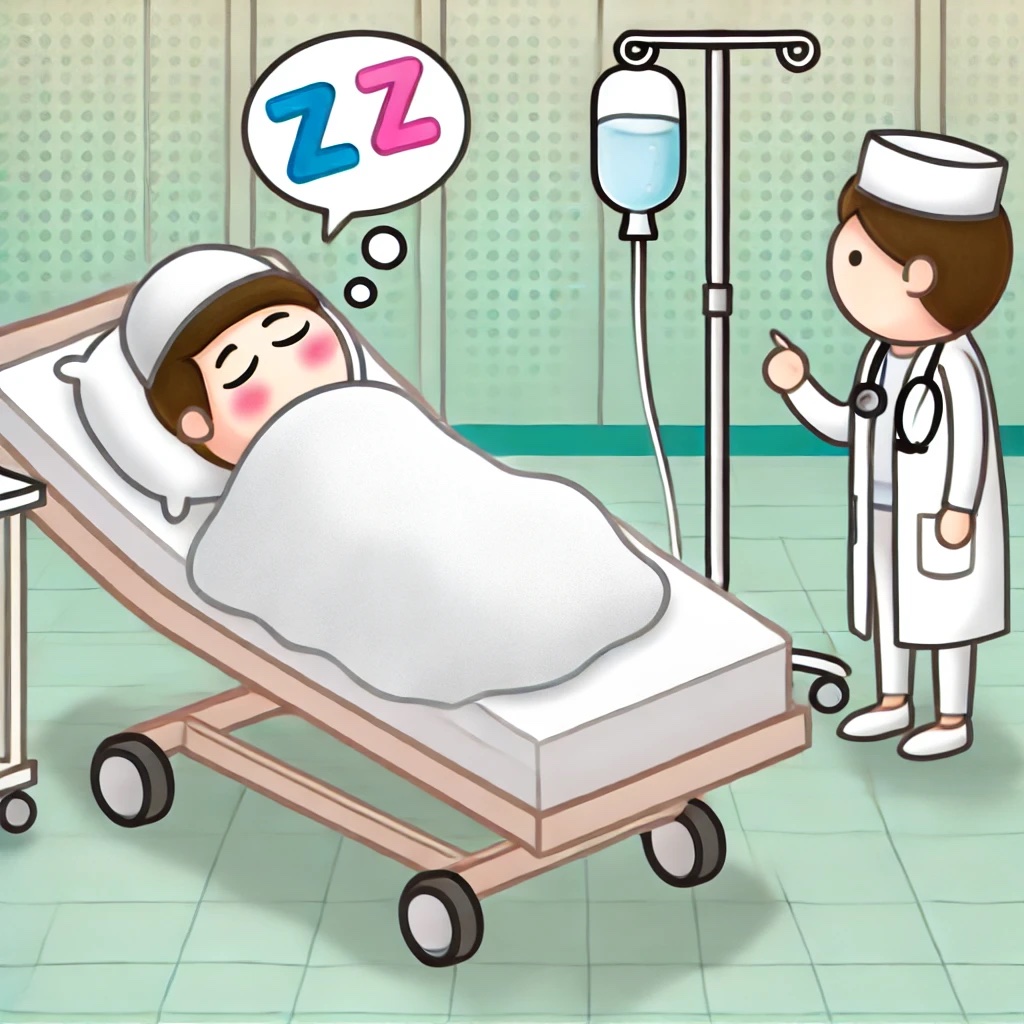Author: Dr Anand Senthi
8/7/23
ED Physicians are experts in procedural sedation and routinely provide this safely to a wide variety of patients for a host of different procedures. In order to provide safe procedure sedation, consider the following:
- Airway & Oxygenation
- Monitoring
- Procedure Related

Patient Selection
Choose your patients and procedures carefully.
- Patient:
- Some patients may be more appropriate to sedate in the operating theatre (OT) with a protected airway. These include but are not limited to, the very elderly, patients with significant cardiorespiratory co-morbidities, patients with adverse airway features, particularly multiple factors predicting difficult mask ventilation (e.g. BONES or MOANS mnemonics) and those who have unstable vital signs.
- Procedure:
- The procedure matters! A patient with some of the adverse features listed above may still be appropriate for ED procedural sedation for brief low pain procedures (e.g. cardioversion) where one can, if needed, succeed with light sedation. By contrast, if very deep or prolonged sedation is required (e.g. the elderly hip relocation) such patients may be more appropriate for the OT.
Staff selection:
Usually this involves:
- A doctor trained in procedural sedation to manage drugs and airway.
- At least one clinician to perform the procedure.
- A nurse to assist and scribe
When assigning staff, always balance the needs of the procedure and the needs of the department. Sometimes a procedure may need to delayed until the right staff skill mix is available given the existing competing needs of the department. On the other hand, it can also at times be advantageous to prioritise performing the procedure expediently in order to clear a bed and release attending staff to manage the rest of the department.
Area
Consider the most suitable area to perform the procedure. While typically a resuscitation cubicle is used this is by no means mandatory. Depending on the procedure, the skill mix and space required, the available staff and spaces and the competing department needs at that time, the procedure may suitably be performed in an alternative procedure room. In some situations even a standard cubicle may have to be used. If there are insufficient wall oxygen ports, an oxygen cylinder may need to be used to supplement.
Patient Preparation
- Optimise Pre-oxygenation
- Positioning:
- Pre-oxygenate with the patient sitting up to reduce the volume of dependent lung and resultant atelectasis – collapsed alveoli can’t denitrogenate! If the patient’s clinical state doesn’t allow for sitting up, then either elevate head of the bed to 30 degrees or use reverse trendelenberg position at 30 degrees.
- Use a high FiO2 source of oxygen for pre-oxygenation.
- The most commonly available ED option is usually a non-rebreather mask at 15L/min providing around 60-70% FiO2 although this can be improved to 90% by increasing the flow rate beyond >15L/min.
- Mapleson circuits are an excellent alternative if available and experienced in their use.
- In general a Bag-Valve Mask (BVM) resuscitator should not be used for pre-oxygenation without access to an specially designed version and knowledge of how to assess that it meets the necessary requirements to function well for the pre-oxygenation of spontaneously breathing patients (e.g. the presence of an expiratory valve or PEEP valve as well as an inspiratory valve that opens with minimal negative pressure) .
- Patients with type 1 respiratory failure may need additional PEEP for adequate pre-oxygenation to splint open collapsed alveoli. This can be provided via a ventilator (see VAPOX Protocol – Ventilator Assisted Pre-Oxgenation), standalone NIV machine or BVM with a PEEP valve). Such patients with respiratory shunt physiology may not be the best candidates for ED procedural sedation and additionally they may also not respond effectively to the Apnoeic Oxygenation used in our Stepwise Approach to Apnoea.
- Wait the required time:
- Generally 3 minutes of pre-oxygenation at tidal volume breathing is sufficient and equivalent to a quicker 8 vital capacity (full inhalation/exhalation) breaths (about 1 minute duration). Why not do both in awake cooperative patients?
- Positioning:
- Optimise Haemodynamics
- If the patient’s blood pressure is soft
- Fluid boluses +/- vasopressors such as metaraminol boluses may be required before and/or during the procedure. A running IV line is useful both to flush medications and for quick availability of further fluid boluses if required.
- Choose drugs carefully in this setting. Generally propofol is avoided or very small doses are used in combination with other sedatives/analgesics. Ketamine is generally, but not always, the drug of choice in such patients, though should still be used judiciously as the resolution of pain in a shocked sympathetically “maxed-out” patient can still undermine the sympathetic response resulting in a fall in blood pressure. Such patients may also not be ideal candidates for ED procedural sedation.
- If the patient’s blood pressure is soft
Equipment
– Airway & Oxygenation Equipment (backup)
In case of complications prepare your backup safety equipment.
- Airway: Prepare and size your safety airway equipment such as oropharyngeal and nasopharyngeal airways, supra-glottic airways, endotracheal tubes, laryngoscopes and suction. Visualise your CICO (Can’t Intubate, Can’t Oxygenate) equipment for cricothyrotomy so you know it is at least available.
- Oxygenation: In addition to your pre-oxygenation device, a BVM should be tested and available and place nasal prongs on the patient.
- Nasal Prongs: place these under your pre-oxygenation device and run these at only about 3L/min pre-procedure. Higher flow rates can sometimes be uncomfortable for the awake patient and can wash out your CO2 trace which is required as your “apnoea alarm”. The nasal prongs represents backup safety equipment utilised in the related Stepwise Approach to Apnoea. If you apply that approach you should hopefully never need a BVM but it should still be prepared and tested before the procedure just in case.
– Monitoring Equipment
- Use end tidal CO2 monitoring (in addition to other standard vital signs monitoring)
- This has rapidly become close to, if not actually, a standard of care in procedural sedation (at least in Australia) due the ability to detect apnoea often well before clinicians would detect it otherwise
- This is usually performed via nasal cannula detectors or some other “jerry-rigged” solution with Co2 sensor stuck through the oxygen mask
- Other standard monitoring should be used including oxygen sats, BP, HR and while not mandatory, continuous cardiac monitoring can be desirable.
– Procedure Equipment
- Prepare whatever equipment is required for the procedure itself such as a defibrillator, plaster trolley, suture equipment etc.
Drugs
- Drug choice:
- Propofol is the gold standard drug for deep sedation due to its rapid onset and offset. Ketamine is also a great choice due to analgesia provided, rapid onset, relative cardiostability and preservation of airway reflexes and breathing. They can be used well in combination.
- Fentanyl and midazolam are good drugs for anxiolysis and light sedation but poor drugs to titrate for deep sedation to their slow onset/offset. If you wish to use them, use them as a “pre-med” at least 3 minutes before deep sedation drugs are given and reduce the doses of the latter accordingly. Note combining opioids with propofol may increase your risk and duration of apnoea so careful dose reduction of propofol is essential.
- Timing is key:
- Wait the required time after each dose before assessing response and re-dosing. That is 60 seconds for propofol and ketamine and 3 minutes for fentanyl or midazolam.
- Re-dosing more quickly before the drug has achieved most of its full effect, can lead to overdosing. This results in unnecessarily prolonged periods of apnoea as well as cardiovascular complications such as hypotension.
- Set a timer: Don’t “guesstimate” how much time has passed – you will be wrong. When standing at the bedside ready to start a procedure it can feel like an eternity has passed despite it only being 30 seconds! Some ED’s have timers on the wall or the monitors have them built in. If you have neither, there’s always the ubiquitous smartphone!
Information
Gather any relevant information (from the patient and/or their medical record) about the patient’s medical history, previous sedation/anaesthetics including adverse reactions and complications, similar prior procedures (what drug doses and techniques were used) and allergies.
If you are involved in performing a procedure that you don’t perform very frequently it can be useful to quickly review guidelines/resources/diagrams or consult colleagues or other clinical teams to refresh your memory.
